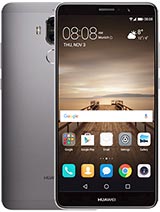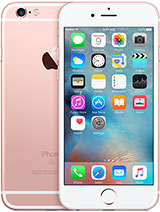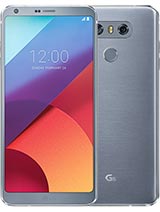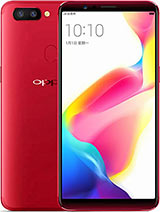GSMArena smartphone buyer's guide:January 2018 edition
January 2018 edition

Phones for €400-€500
We're officially in flagship territory now - both current ones and those of yesteryear. Value-for-money is starting to decline as grounds for bragging rights appear. Circling back to the rather worrying observation on pricing, we touched upon in the intro - this is the price bracket it starts to shine through.
To be fair and also put your minds at ease, slight price hikes in older devices do not appear to be an industry-wide trend. Most of the affected devices we managed to track down are ex-flagships, mostly from the likes of Western-friendly big brands, like the Samsung Galaxy S7 family, for instance. Most devices out of China, even true high-end ones, like the Huawei Mate series, are behaving as they should and have been coming down in price quite nicely month over month.
Review |
Specs
|
Cons
|
Speaking of which, we kick things off with last year's Huawei Mate 9. Sure, it might be missing a few bells and whistles like the AMOLED panel of its Mate 10 Pro successor, as well as the cutting-edge and AI-rich Kirin 970 chipset. However, the 5.8-inch phablet still packs quite a punch. Currently going for just around €480, its hard for any price competitor to even come close to its excellent Dual 12MP + 20MP Leica-branded camera setup. Throw a beefy 4,000 mAh battery in the mix, and you get an excellent, well-rounded and still perfectly relevant flagship.
The next oldie, but goodie might seem a little tardy to any iOS fans out there, waiting for an Android alternative. Unfortunately, that's the financial reality set forth and vigorously guarded by Apple. Sure, we could have included the likes of the iPhone 6, or perhaps even the iPhone SE earlier in the list, but those are really not what we would consider good value or still very relevant, for that matter.
Review |
Specs
|
Cons
|
The 2015 iPhone 6s is the first that made the cut. There is one catch, though - opting for it instead of an €100 more expensive iPhone 7, means giving up waterproofing and stereo speakers. On the flip side, though, opting for the older 6s, means you could potentially get a usable storage option for a reasonable amount of money. Hunting for one on the iPhone 7 quickly widens the previously mentioned €100 price gap.
Moving on to 2017 devices and sticking to the compact form factor of the iPhone 6S, the Sony Xperia XZ1 Compact instantly springs to mind. With a very compact 4.6-inch display diagonal and a high-end Snapdragon 835 underneath, the XZ1 Compact is a rather unique beast. It's nothing short of a miniaturized flagship, with no glaring specs omissions. Well, perhaps minus the 720p resolution, which still works pretty well on that screen diagonal and enables ludicrous frame rates out of the Adreno 540 GPU.
Nominated for:Review |
Specs
|
Cons
|
Sony has even added IP68 certification and some commendable power management to squeeze out 108 hours of endurance out of the 2,700 mAh battery. And while we're on the topic of nice compact devices, the original Google Pixel might be worth considering. An AMOLED panel, Snapdragon 821, excellent Auto HDR+ camera and latest Vanilla Android - these are all properly relevant specs if the price is right.
Review |
Specs
|
Cons
|
The only reason, we are a bit hesitant in recommending it is that you can still easily overpay for a unit. The is even more true for the Pixel XL. Still, if you manage to find the 5-inch Pixel for around €450 as we did, it's a bargain in our book.
If you fancy a more trendy 2017 design, the LG G6 will give you the taste of an ultra-wide screen. It has been going down in price steadily lately, so much so, that we could have probably included it in the previous price segment altogether.
Nominated for:Review |
Specs
|
Cons
|
The G6's display is fully-geared and ready for the next wave of multimedia content thanks to its Dolby Vision/HDR10 compliance. Plus, the Snapdragon 821 is no slouch, the dual 13MP, OIS, and Laser autofocus camera setup is a strong performer, and you even get IP68 and MIL-STD-810G certifications. At its current price, the LG G6 is nothing short of a steal.
Review |
Specs
|
Cons
|
Last, but not least, we have another trendy 18:9 aspect phone, representing the phablet option in this price segment - the Oppo R11s. While technically not a flagship by design, its specs come really close, especially to the OnePlus 5T. The 6-inch AMOLED panel is a pleasure to work with and so is the more than powerful-enough Snapdragon 660. The phone's main Dual 16MP + 20MP camera setup is also capable of brushing shoulders with the big boys of 2017.
Some honorable mentions that didn't make the cut in this price bracket include the Huawei P10, Honor View 10 and the Samsung Galaxy S7.
Reader comments
- Tanase Adrian
- 10 Jan 2018
- SvB
having spent some more time with the device, i can't say that the camera is great and i don't any reason why dxomark gave it a better grade thana huawei mate 9,cause it is waay behind!! it overexposes a lot, photos lack contrast, no eay near those ta...
- AnonD-709656
- 08 Jan 2018
- Hxh
IKR. Mi Note 3 is possibly the most balanced phone of the year. Amazing camera like the HTC U11, good performance similar to OnePlus 3T, fast fingerprint scanner, good sound quality, etc.
- AnonD-709656
- 08 Jan 2018
- Hxh
A perfect phone in my opinion should have: A metal body and water resistance like the iPhone 7 Google Pixel 2's camera and LG V30's wide angle lens. Fingerprint scanner position like G6 and accuracy like the Mi 6 Front Firing speakers and 18:...




